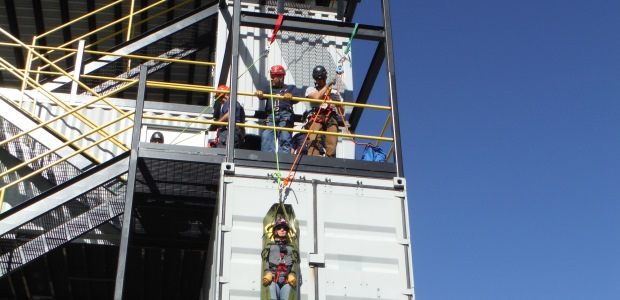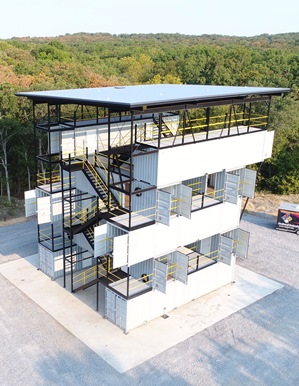
Hands-on, Scenario-based Training for Emergency Responders and Rescuers
The key to mitigating human error during a real emergency is the right kind of realistic training.
- By Deborah Lovell
- May 01, 2018
Your emergency response training curriculum may be up to date and relevant, but is it enough when a real emergency happens? Will your responders or rescuers recall the information learned when under pressure? And even though your responders earned their training certificates, can they physically and emotionally perform if they have never experienced a real-life emergency?
Unlike other job fields, the role of an emergency responder or rescuer is to save lives in real-life situations in a matter of seconds. Acquiring the knowledge, skills, and abilities responders need to perform these critical life-saving tasks cannot be taught by textbook—they are learned through realistic and repetitive hands-on, scenario-based practice. Unfortunately, the most common omission in private sector training programs is hands-on, scenario-based training.
Public fire and police first responders spend hours and hours, even days, in emergency response training. To test their skills and abilities, many, if not most, fire and police departments utilize props and structures specifically built for their hands-on, scenario-based training. This contained and safe training environment provides a re-enactment of real emergencies that may occur and challenges these responders to act decisively and overcome obstacles not learned in a textbook.
What about industrial emergency responders and rescuers? These first responders also need to know how to apply their skills proficiency in an emergency scenario, how to think through the scenario while keeping everyone safe, and how to identify hazards and challenges associated with and during an incident.
To ensure your first responders and rescuers are fit and able to act in response to an emergency specific to your facility, employers will need to add hands-on, scenario-based training to training program. But unlike our public emergency services sector, industrial businesses do not have props or structures built for hands-on training. So what are the options?
1. Your hands-on training should encompass all skills necessary for all possible facility emergencies.
One option would be to create a realistic environment at your facility specific to the types of skill sets your responders and rescuers may need for all possible facility emergencies, such as high-angle rope rescue, confined space rescue, atmospheric rescue, suspended worker rescue, and rope access or fall protection. Your hands-on training also will need to include the use of the rescue equipment at your facility because your responders and rescuers must have knowledge on how to use this equipment properly and effectively. And you will need to stay updated and knowledgeable on the latest equipment and techniques for emergency response so your team has the ability to safely respond and rescue.
Sound impossible? No resources? Start by finding a third-party emergency response training and service provider who can assist you in developing the proper hands-on, scenario-based training for your environment and identify the technical skillsets needed, as well as the type of rescue equipment required. And don’t forget to engage your responders to help, because it is their role to overcome any challenges or obstacles in a real emergency.
2. Build a space that represents your facility at a third-party training center.
Most commonly, an industrial facility is not available or may not be feasible to use for hands-on training. To use an employer's facility, some operations may have to be temporarily shut down or interrupted to re-enact or create a realistic, scenario-based emergency. In this case, another option is to use a third-party facility that was specifically built for industrial emergencies and provides hands-on, scenario-based training for responders and rescuers. Similar to the props and structures built for, and by, public service firefighters, the Northeast Tech Rescue Training Center was built for industrial businesses to train their teams. The center offers access to training opportunities that companies may not have access to elsewhere.
 Designed and built in collaboration with professional first responders and rescue training experts, the center is centrally located in the United States in Pryor, Okla., and is a six-story, state-of-the-art rescue training facility aimed at saving lives through education and hands-on skills training. The structure is designed so that the challenges are easily interchangeable, never the same, and easily replicate rescue scenarios that industrial rescuers might encounter. Utilizing various Vo-tech programs, the center will build you a space that simulates your facility so your team is trained specifically to the types of response or rescue they may encounter during an emergency at your facility.
Designed and built in collaboration with professional first responders and rescue training experts, the center is centrally located in the United States in Pryor, Okla., and is a six-story, state-of-the-art rescue training facility aimed at saving lives through education and hands-on skills training. The structure is designed so that the challenges are easily interchangeable, never the same, and easily replicate rescue scenarios that industrial rescuers might encounter. Utilizing various Vo-tech programs, the center will build you a space that simulates your facility so your team is trained specifically to the types of response or rescue they may encounter during an emergency at your facility.
Training at the center is led by a team of rescue professionals, most whom have more than 20 years of rescue experience in industrial emergency response and are current or retired municipal firefighters with real rescue experience. The trainers keep up with industry standards and the latest equipment and rescue skills to provide the best training experience. The training curriculum meets all NFPA and OSHA requirements with an emphasis on hands-on and scenario-based training so your employees are proficient and retain the skills learned. The center is also supplied with the latest rescue equipment and personal protective gear so your responders learn how to properly utilize the equipment while in training, allowing for less error at their workplace.
With removable, interchangeable, and adjustable components that allow for a variety of scenario-based trainings, the center offers numerous courses related to technical rescue, hazardous materials, and emergency response. Classes include Confined Space Rescue Technician, Atmospheric Rescue Technician, Industrial Rope Access Technician I/II, Industrial Rope Access Technician III, Suspended Worker Rescue, and many more. The facility is complete with a roof over the entire structure and lighting and electric in all areas to allow for year-round training in all weather conditions, as well as for performing night ops training. Features of the center for hands-on training include reactor simulators; shaft simulators; restricted openings; top, bottom and side entries; sloped, conical bottoms; rounded bottom tanks; auger; mixer; paddle; motor entanglements; and much more. All levels can be smoked up with safe theatrical smoke to simulate atmospheric rescues.
The center will be expanding to include large-scale hazardous materials equipment such as railcars, semi tankers, industrial pipe leak simulators, and the implementation of a 3D incident command simulation software program that puts the incident commanders into the simulation and allows for all types of emergencies, such as fire and hazardous materials releases.
For industrial responders, the center provides an excellent setting for practicing real-world, technical, and critical life-saving skills.
3. Develop responders and rescuers who are proficient in critical life-saving skills.
Training with practical exercises and activities is the most effective proven method for responders and rescuers. Developing responders and rescuers who are proficient in critical life-saving skills as well as physically and mentally ready can only be accomplished through technical-focused skills training with repetitive practice and real-life scenarios specific to your facility.
The key to hands-on training is to mitigate, if not eliminate, possible human error during an emergency when seconds count and lives matter. Not including hands-on, scenario-based training in your emergency training program is not an option. Whether you use your facility or opt for a third-party rescue training center, by challenging your responders and rescuers in a real-life emergency environment, you will create a higher performance from your responders, individually and as a team.
This article originally appeared in the May 2018 issue of Occupational Health & Safety.